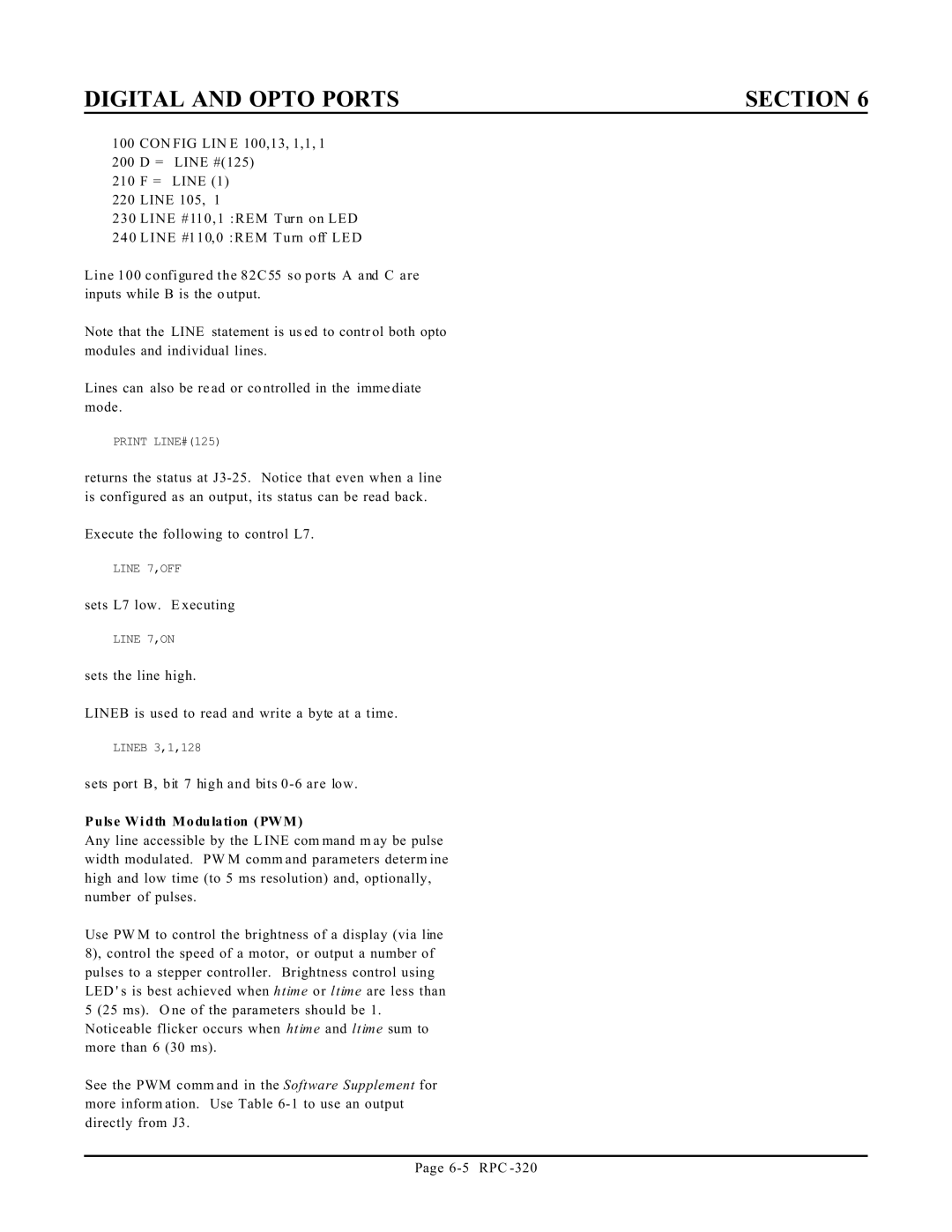
DIGITAL AND OPTO PORTS
100CON FIG LIN E 100,13, 1,1, 1
200D = LINE #(125)
210F = LINE (1)
220LINE 105, 1
230LINE #110,1 :REM Turn on LED
240LINE #110,0 :REM Turn off LED
Line 100 configured the 82C55 so ports A and C are inputs while B is the o utput.
Note that the LINE statement is us ed to contr ol both opto modules and individual lines.
Lines can also be re ad or co ntrolled in the imme diate mode.
PRINT LINE#(125)
returns the status at
Execute the following to control L7.
LINE 7,OFF
sets L7 low. E xecuting
LINE 7,ON
sets the line high.
LINEB is used to read and write a byte at a time.
LINEB 3,1,128
sets port B, bit 7 high and bits
P u ls e Width Modulation (PWM)
Any line accessible by the L INE com mand m ay be pulse width modulated. PW M comm and parameters determ ine high and low time (to 5 ms resolution) and, optionally, number of pulses.
Use PW M to control the brightness of a display (via line 8), control the speed of a motor, or output a number of pulses to a stepper controller. Brightness control using LED ' s is best achieved when htime or ltime are less than 5 (25 ms). O ne of the parameters should be 1. Noticeable flicker occurs when htime and ltime sum to more than 6 (30 ms).
See the PWM comm and in the Software Supplement for more inform ation. Use Table
SECTION 6
Page
